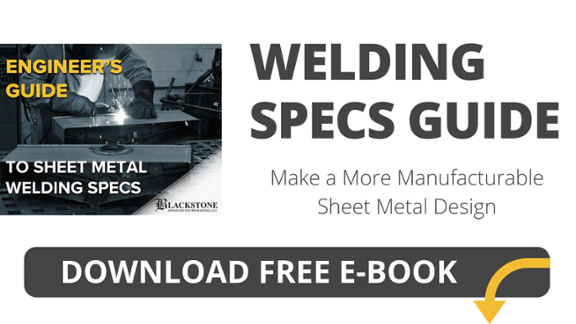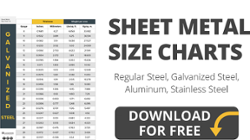Metals have different physical and chemical properties. In the welding world, the sheet metal vs. plate metal comparison has proved problematic to many. Sheet and plate are descriptive words for the classification of metal in regards to its thickness.
The thickness of a product is the primary determinant of the category under which it falls. The main difference between sheet and plate metal is thickness or gauge. Sheet metals are thinner than plate metals.
This article digs down into the differences between sheet and plate metal. Read on!
What is Sheet Metal?
Sheet metal is any metal with a thickness of 0.5-6 mm. This type of metal is thicker than a foil but thinner than a plate metal. Steel metal passes through an industrial process to make it compact and flat. It is available in either flat or coiled strips.
Sheet metal is essential in that it makes the basis of many metalworking and engineering processes. Numerous metals can be made into sheets. These include;
- Aluminum
- Steel
- Tin
- Copper
- Titanium
- Brass
- Nickel
Other metals such as platinum, gold, and silver can be made into sheets for decorative purposes. In the US, the gauge is used to imply the thickness of metal. The thinner the metal sheet, the higher the gauge. Standard sheet metal ranges from 30-gauge to about 7-gauge.
Metal Sheet Making Processes
There are different methods in the making of metal sheets. They include;
Cutting
This process is the most basic you can perform on a metal sheet. You can cut sheet metal in different ways while using tools such as snips or even powered shears.
Deep Drawing
This is a metal sheet forming process where metal is stretched over a form or die, with the depth of the part exceeding half its diameter. Specially rolled material is used in the deep drawing process. This process is used to make fuel tanks for automotive, 2-piece aluminum cans, and kitchen sinks, among other materials.
Decambering
This metalworking process involves the removal of camber from a strip-shaped material. It’s mainly done to correct deformed edges.
Roll Forming
This is a metal forming process in which metal sheet is passed through rolls to reduce thickness. When done under a temperature below the recrystallization level, it’s known as cold rolling and hot rolling when done above the recrystallization temperature.
Perforating
In this process, the metal sheet is punched to make multiple small holes in a flat workpiece. This process is used to create surface cutting tools such as surform.
What is Plate Metal?
Any flat metal with a thickness exceeding 6mm is referred to as plate metal. Metal plates come in large stock, flat, and wide forms. Finish or surface conditions, however, vary considerably. They include;
- galvanized
- anti-slip
- pickle and oiled
- textured
- diamond patterned
- smooth cold-finished
- rough hot rolls
The most common materials for manufacturing metal plates are steel, titanium, and Vitallium. These materials may be angled, flat, straight, tubular, or holed.
There are two broad categories for metal plates;
Metal nail plate- in this form, nails are used as a wood fastener. The nail patterns are either stamped out or marked on the plate.
Metal connector plate- in this form, teeth are stamped out such that they are perpendicular to the plane of the plate in a particular pattern.
Uses of Metal Plates
Metal plates are handy in the modern-day world. They are used in various industrial applications such as;
- struts for mechanical support
- construction and building materials
- raw material feed
- floor fabrication
The Advantage of Sheet Metal vs. Plate Metal
Sheet metal has an advantage over plate metal due to flexibility. Sheet metal can be shaped and formed through various processes, unlike plate metal. Any method used gives the sheet metal a different shape and size to make it suitable for use.
The Bottom Line
Both sheet and plate metals have different uses depending on weight requirements and durability. The main difference being thickness, there is nothing much between them. For more content on metalwork, read our blog.



